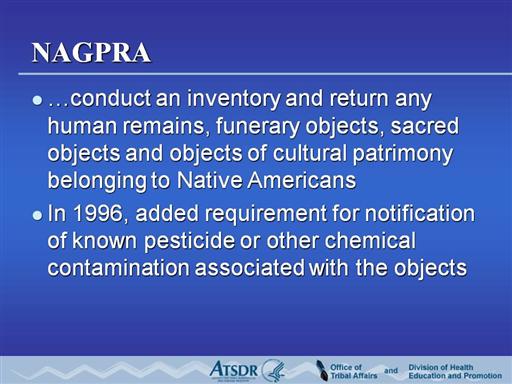 |
NAGPRA was legislated to provide for the protection of American Indian
graves and other purposes. Under this law, each federal agency and each
museum which has possession or control over holdings or collections of
Native American remains and associated funerary objects was to compile an
inventory of such items and, to the extent possible based on information
possessed by such museum or federal agency, identify the geographical an
cultural affiliation of such items. These statutes were intended to remedy
the cultural harm perpetuated by the removal of these items from Native
communities. Thus, Native practitioners would enjoy the use of the sacred
objects. These objects, however, have in many cases been retained in museum
collections for decades. While within these collections, many of the
objects were treated with pesticides, metals and other chemicals to ensure
preservation. In 1996, regulations imposed a duty to notify the tribe of
contamination known to the museum and likely to be hazardous to humans. |
